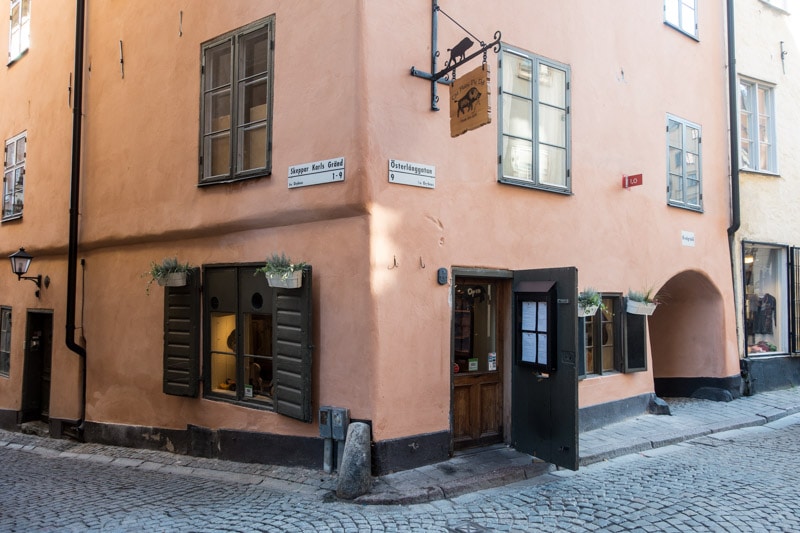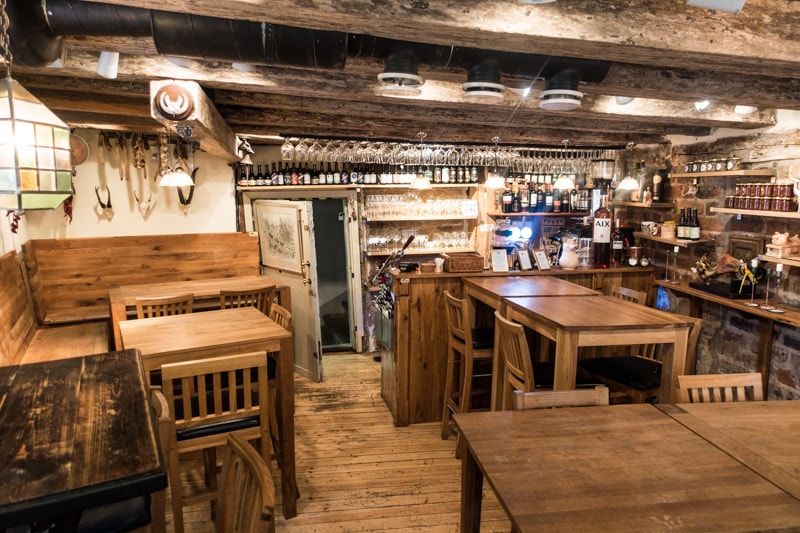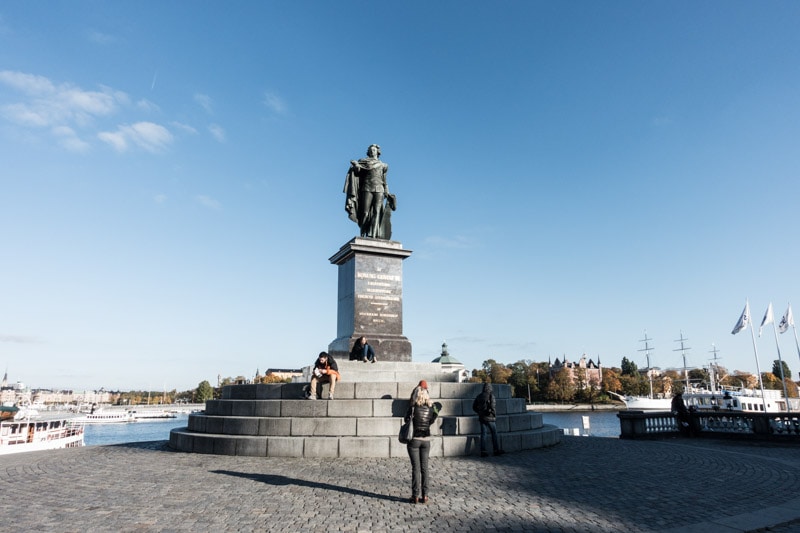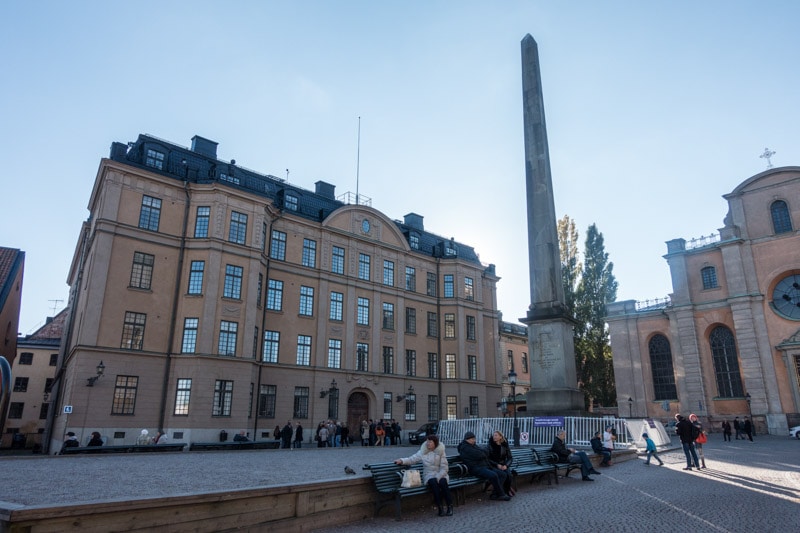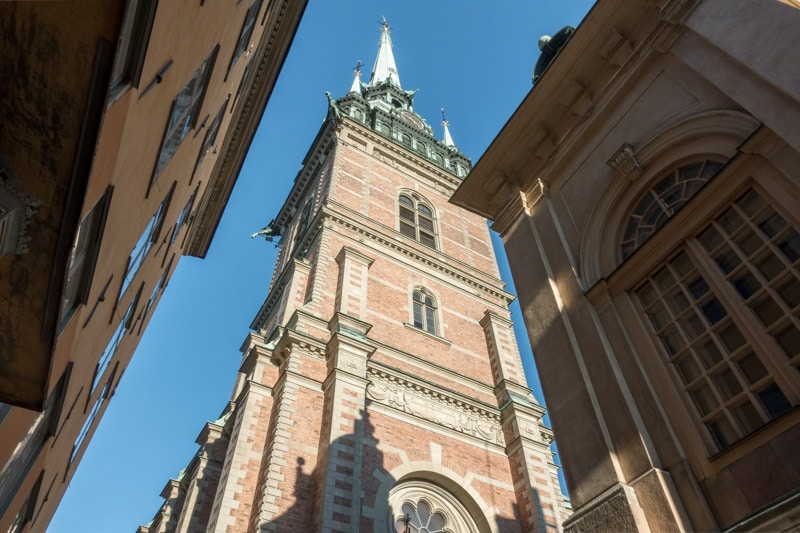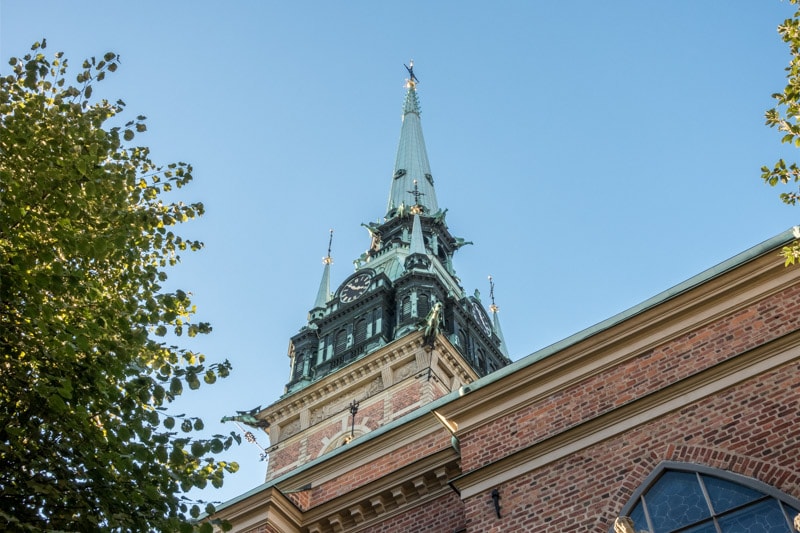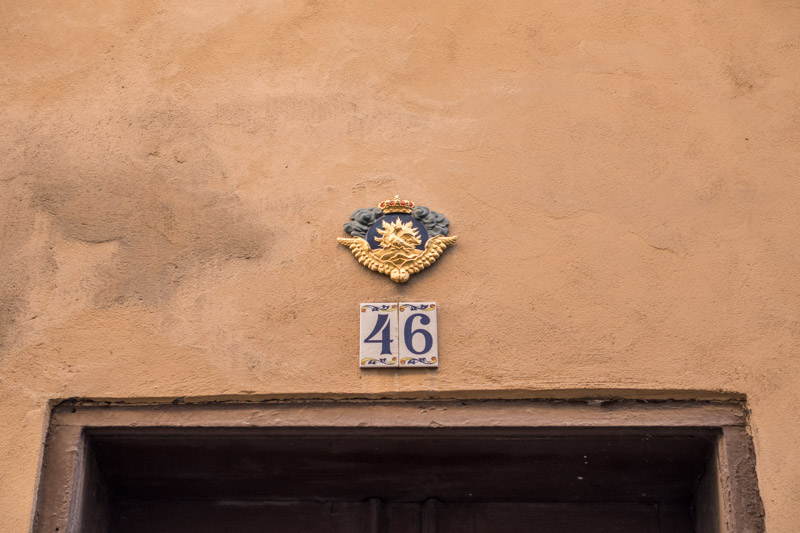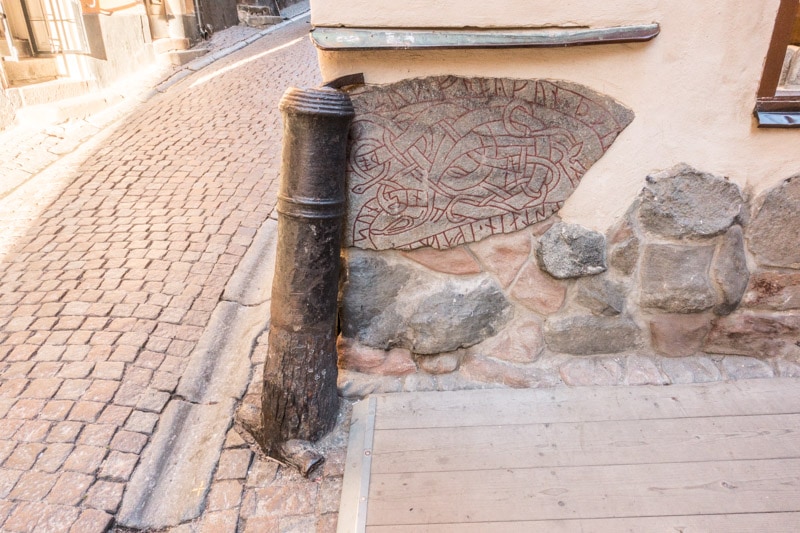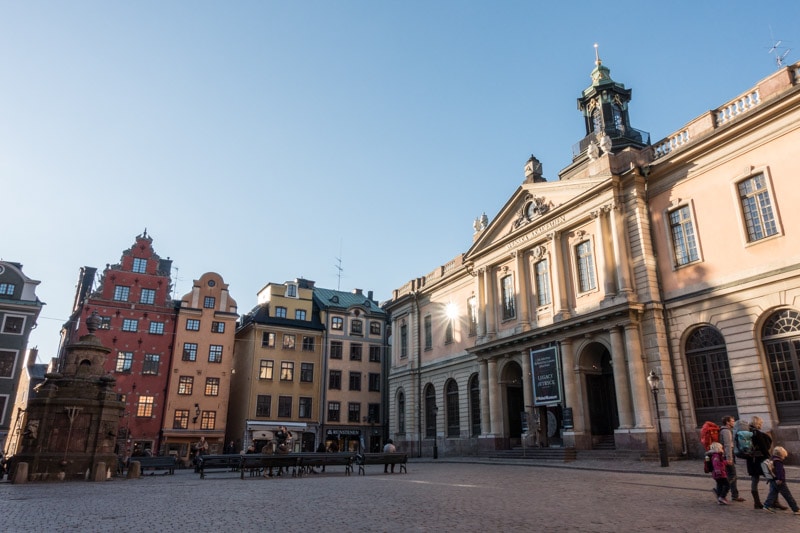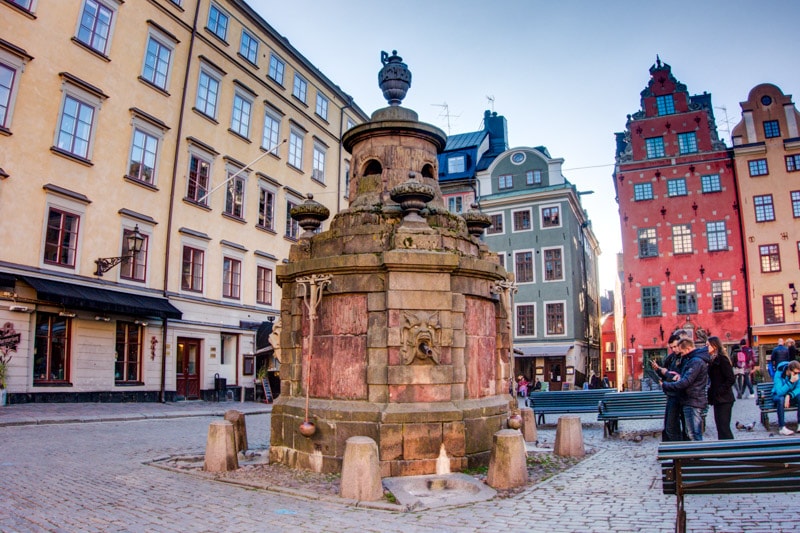After an early morning and a long day traveling from Copenhagen to Stockholm by train, it was finally time to start exploring the Old Town of Stockholm, also known as Gamla stan.
Gamla stan, popular with tourist, is a charming and photogenic island filled with medieval alleyways, cobbled streets, antique shops, old churches, statues, and more. Until the 1600s, all of Stockholm was contained in this small area.
Gamla stan is home to many popular tourist attractions, many which I visited on this day, including the Royal Palace, Stockholm Cathedral, Västerlånggatan (street), and Stortorget (square).
This recap is part of a multi-day post of my visit to Copenhagen and on to Stockholm. If you need to catch up with the journey so far, then you can read about it here:
Day 1: My journey from Los Angeles to Copenhagen, Denmark
Day 2: Breakfast, sights, and fish and chips in Copenhagen
Day 3: Copenhagen markets, a church, and Christiania
Day 4, Part 1: SJ train from Copenhagen to Stockholm/
Lunch at The Hairy Pig Deli
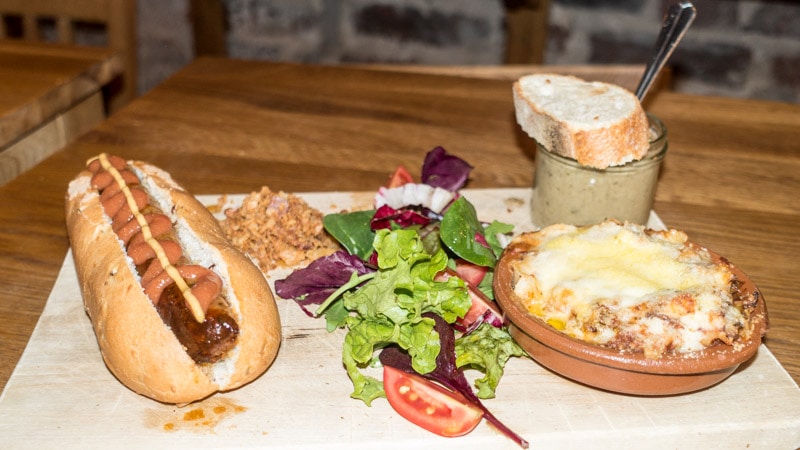
Slottsbacken
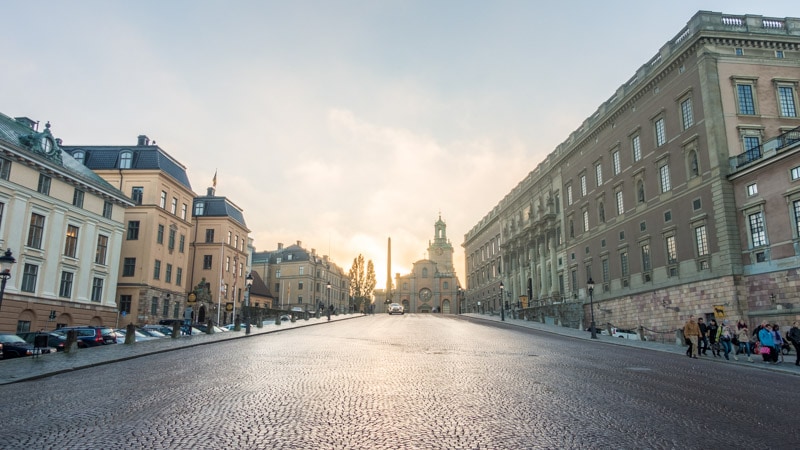
My walk through Old Town started at Slottsbacken, a wide, cobbled street running from Stockholm Cathedral to the waterfront.
Slottsbacken meaning “palace slope,” is dominated by the Royal Palace or Stockholm Palace.
This grand building is the official residence of the Swedish monarch, although they actually reside at Drottningholm Palace. Offices of the king, the Royal Family, and Royal Court are located here. The palace is used by the king for performing duties as head of state.
Walk downhill towards the waterfront to find a large statue of King Gustav II.
At the bottom of the Slottsbacken, along the waterfront, is a statute of King Gustav III watching over the Royal Palace.
Gustav was responsible for transforming Stockholm from a sleepy Scandinavian port city into a sophisticated and French inspired capital. Gustav, who was an art lover, founded the Royal Dramatic Theater and Royal Opera. It was inside this same Royal Opera were Gustav was assassinated in March 1792.
Head back uphill. Stop the the large obelisk in front of Stockholm Cathedral.
This 72 foot (22 meter) granite obelisk is considered to be the very center of the city of Stockholm.
The obelisk was commissioned by King Gustav III in 1800 in honor of Stockhom’s merchant class for support during Russian War in from 1788 to 1790.
Just across from the obelisk is Stockholm Cathedral.
Storkyrkan (Stockholm Cathedral)
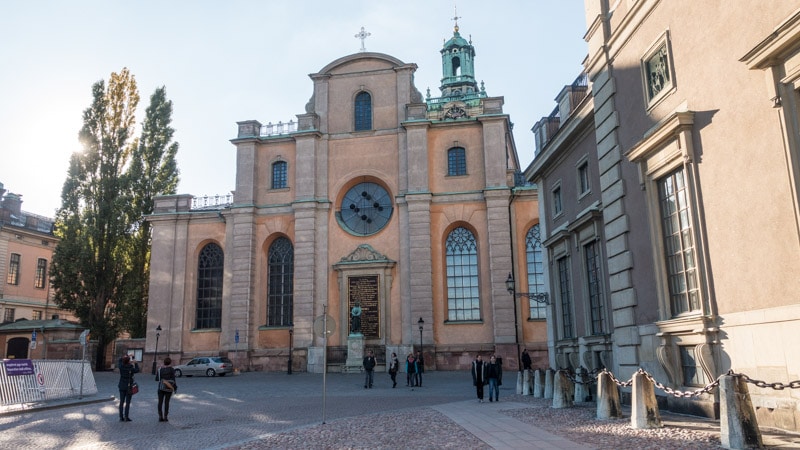
Located on the western end of Slottsbacken is Storkyrkan, or Stockholm Cathedral.
This cathedral, dating back to the 13th century, is the oldest in Old Town. According to some, the cathedral was built by Birger Jarl, the founder of Stockholm. For over 400 years, it was the only parish church in the city.
Some of the most famous items found inside the church include the stunning Saint George and the Dragon created by Bernt Notke in 1489 and Vädersolstavlan, a oil-on-panel dating back to 1635 depicting Stockholm in 1535.
With your back facing Storkyrkan, walk towardsr the dark orange building to your right.
Finnish Church (Finska kyrkan)
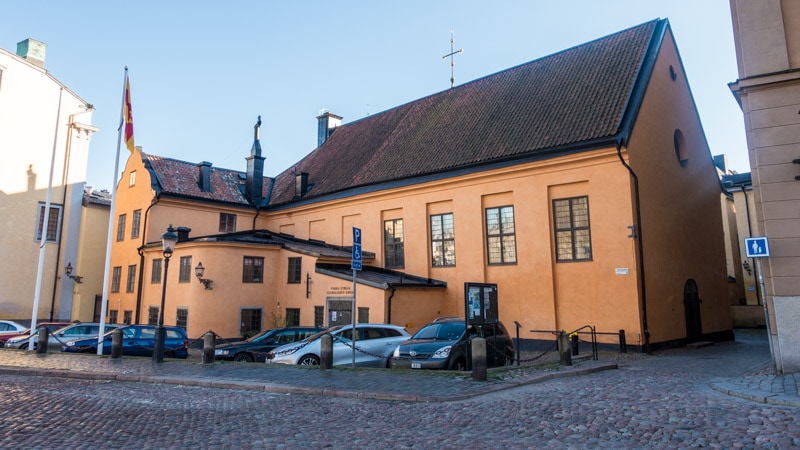
The colorful church is known as the Finnish Church.
The church dates back to 1725, almost 300 years ago. Prior to a church, a building known as Lilla Bollhuset. It was converted into a church where it was opened on December 19, 1725.
If you look closely, you might notice that the church is missing a tower that is common with churches at the time.
Though mass is given in Finnish, twice a month there is a mass in Swedish.
Walk down the lane found to the right of the church into a shady courtyard.
Järnpojke Statue (Iron Boy looking at the Moon)
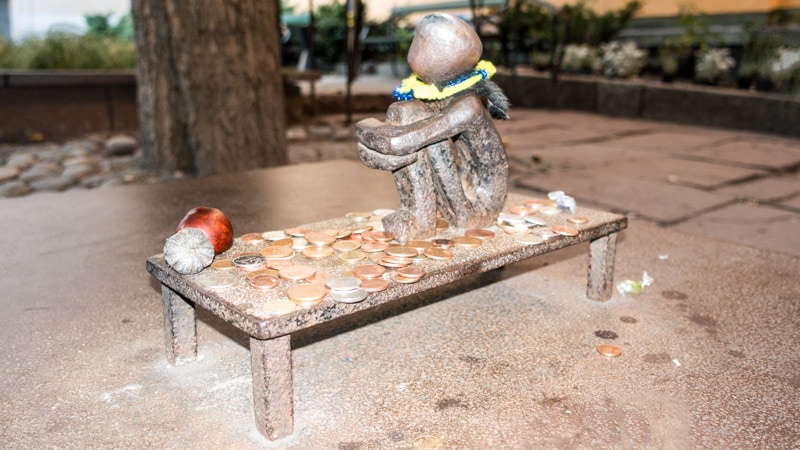
If you walk down the small lane to the right of the Finish church, you will enter a small, and often missed courtyard known as Bollhustäppan.
Inside this courtyard is the smallest public statue in Stockholm, known as Boy Looking at the Moon or Järnpojken (Iron Boy). This tiny statue was seriously the size of my fist.
The statue was created by artist Liss Eriksson in 1954. The statue depicts a memory of the artist of when he use to stare at the moon through his bedroom window on sleepless nights. Local legend claims that the statue was built in honor of orphans who had to transfer cargo between ships before Stockholm’s locks were built.
If you visit the statue in the winter, you might see the Iron Boy covered in tiny knit caps and sweaters. These items were hand knitted my local Swedish grandmas in order to keep the boy warm during the cold winter months.
The coins that tourist leave are collected and donated to the Finnish Church, who ironically would rather tourists not leave the coins in the first place. Taking of the coins is considered bad luck as the child sees everything and forgets nothing. You might also see tourists rubbing the shiny head of the statue hoping to gain new wisdom.
Västerlånggatan, the main commercial and tourist drag of Gamla stan
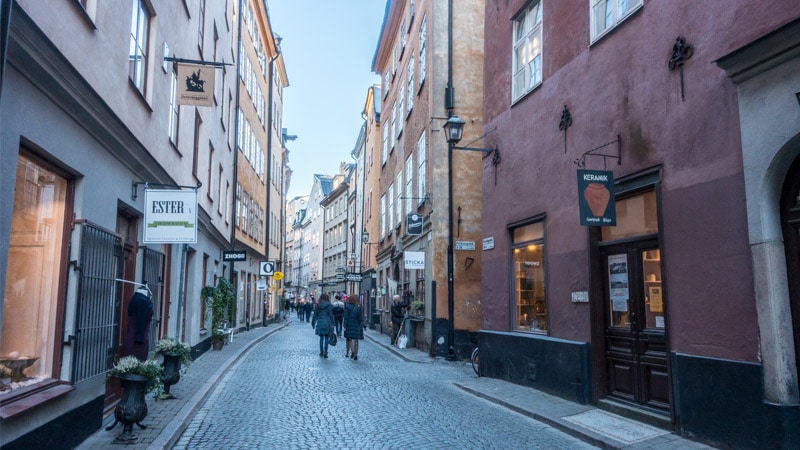
Västerlånggatan is Gamla Stan’s main eating, shopping, and tourist drag of Stockholm.
Västerlånggatan follows the course of the defensive walls which were demolished in the 13th century. When the walls existed, Västerlånggatan was little more than a path outside the city walls following the shoreline.
Västerlånggatan is worth wandering down, but many of the historic charms of Old Town are found elsewhere. Be sure to wander off the main street down the small side lanes to find hidden and picturesque spots.
On warm summer days, Västerlånggatan is packed with tourists visiting one of the many shops, boutiques, cafes, and restaurants.
German Church (Tyska Kyrkan)
During the Middle Ages, the area surrounding the beautiful German Church (Tyska Kyrkan) was mostly inhabited by Germans. Tyska Kyrkan became the first German Lutheran Church in Sweden.
In the 14th century, a German guild was located on this spot. The guild was gradually rebuilt into a church starting around 1580. The chapel was enlarged into its present two-nave church between 1638 and 1642.
For me, one of the most prominent features of the church was the imposing brick steeple and cooper covered spire. Completed in 1878, the steeple along with the spire measure in at 282 feet (86 meters).
The elaborate carillon, a type of musical instrument housed inside the bell tower (belfry), has been played four times a day since 1666.
The baroque interior of the church was bright with sunlight thanks to large windows. Wine cellars from the original guild can still be found under the current marble floor. In the atrium is a window featuring Saint Gertrude, for who the church is dedicated to. The 32 foot (10 meter) altar was designed by Markus Hebel, a Baroque master from northern Germany.
If you have time, be sure to wander through the courtyard of the church.
Prästgatan (The Priest’s Street)
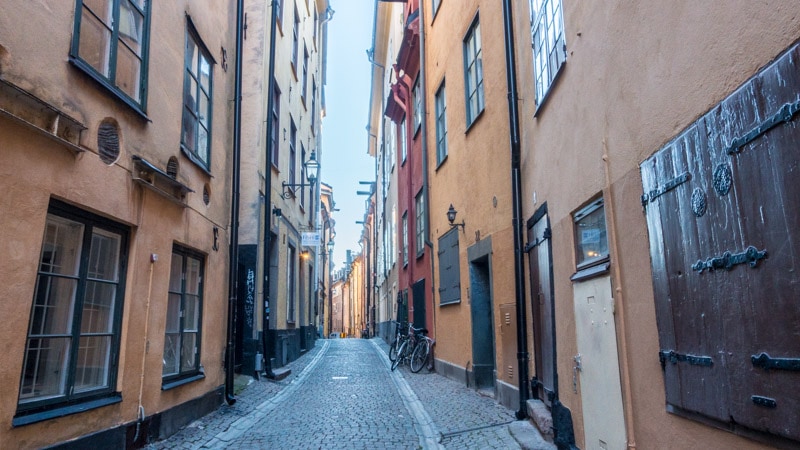
Prästgatan is a great break from the hordes of tourists walking down Västerlånggatan. Prästgatan, known as Priest’s Street, is a peaceful 15th century lane that runs parallel to Västerlånggatan.
As you wander down the street, keep an eye out for house #46. If you look above the doorway, you will notice a flaming gold phoenix under a red-crown medallion. This emblem notified the firefighters which houses paid for insurance, meaning they could be saved during a fire. Fire was a big problem for the homes of Stockholm until only stone, stucco, and bricks could be used for construction in the town center.
If you walk down Prästgatan a few more blocks, where the street intersects with Kåkbrinken, keep an eye out for a cannon barrel on the corner. This oddly located cannon barrel protects a Viking age rune stone. This stone is one of three found in Old Town. The other two were found in a wall near the southern city gate and another in a stairway inside the Riddarholm Church.
Inscribed into the stone is a Nordic script translating to “Torsten and Frögunn had the stone erected after their son.” It is believed that the stone was brought to Stockholm from an unknown location to be used as building material. The stone is believed to date back to 1000, making the stone 200 years older than the city.
Stortorget
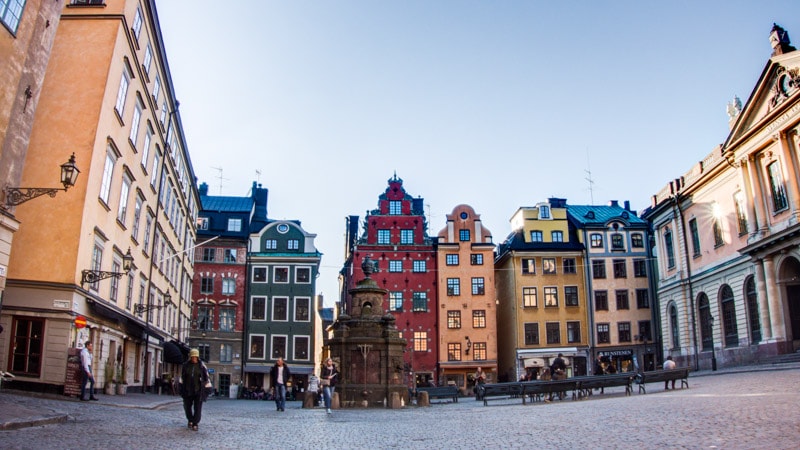
Stortorget, the oldest square in Stockholm, was the historical center of medieval Stockholm.
The square was the location of a notorious bloodbath in 1520. Many Swedish aristocrats, merchants, and priests who challenged Danish rule were beheaded on this spot. One of the survivors who escaped, Gustav Vasa, went on later to become the King of Sweden.
Today, Stortorget is extremely popular with tourists who packed the square at all hours of the day. It is also not uncommon to for the square to be used as the site of performances and demonstrations.
Surrounding this pretty square are colorful buildings topped with gables.
In November and December, Stortorget is the site of the Old Town Christmas Market where you will find 40 stalls selling all sorts of traditional Swedish handicrafts and food including sweets and smoked meats.
On the northern side of the square is the Stock Exchange Building. This grand structure, designed by Erik Palmstedt, was built between 1773 and 1778. The Stockholm Stock Exchange used this building until 1998.
Located upstairs is the Swedish Academy, which has used the building for meetings since 1914. At one of these meetings, the Nobel Prize for Literature is selected and announced by the academy.
Downstairs you will find the Nobel Museum where you will find great information about the Nobel Prize, Nobel laureates, Alfred Nobel, the founder of the prize.
Just across the way from the Stock Exchange Building is the town well. The well was also designed by Palmstedt and built in conjunction with the Stock Exchange Building. During the 19th century, the well dried up due to land elevation. The well was then relocated to Brunkebergstorg, a public square just to the north, before it was moved back to this location in the 1950s. Today, the well is connected to the city water line.
View of Old Town Stockholm from the top of the Katarina Elevator
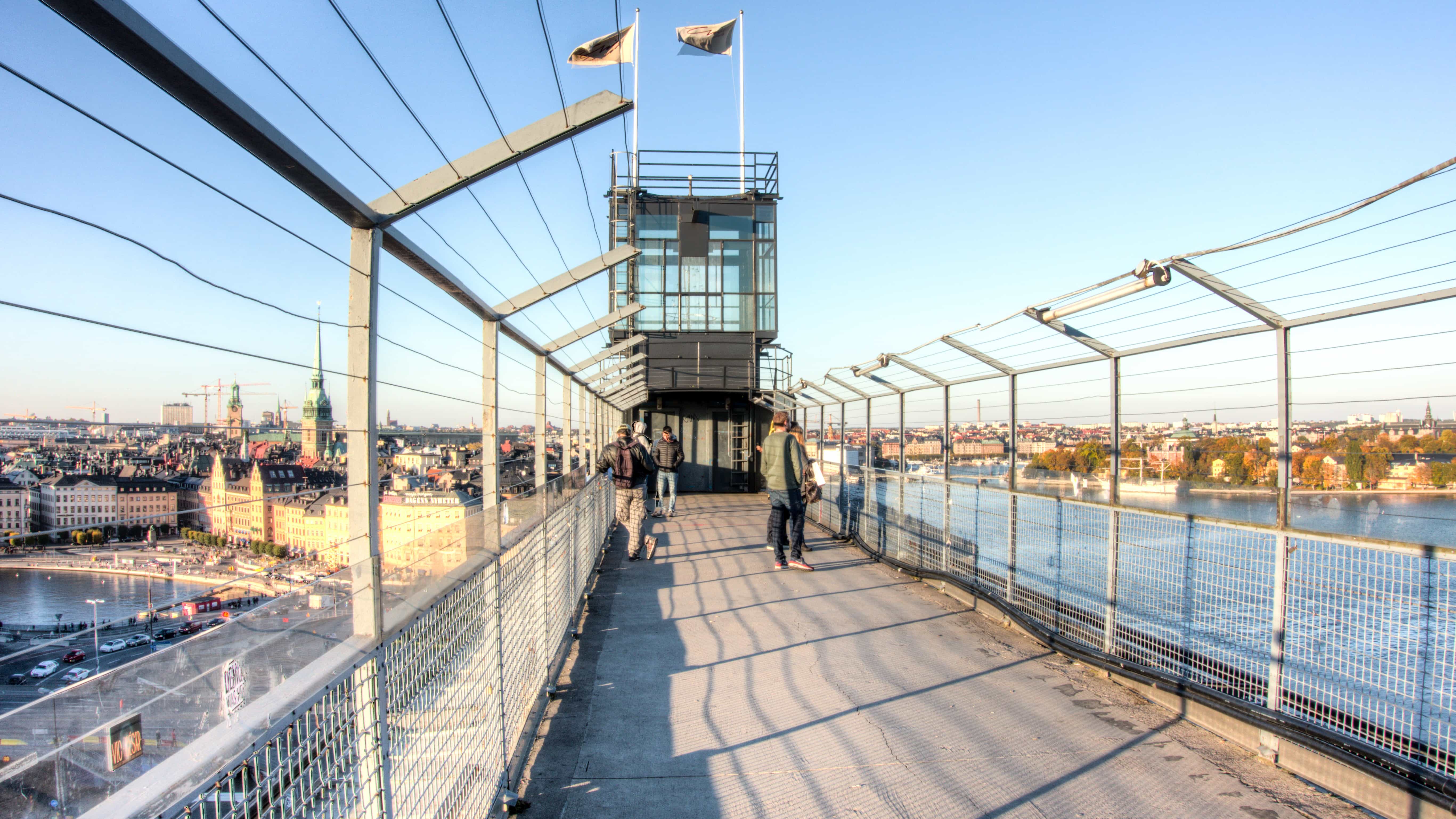
With the sun starting to set, I thought it would be great to finish my walking tour of Gamla Stan by visiting the Katarina Elevator (Katarinahissen) just to the south of Old Town.
Katarina Elevator is located in Slussen, an area connecting Gamla stan with the Södermalm district to the south.
A lift was first built at this location in 1881. The current lift dates back to 1936 when the Slussen transport interchange was constructed.
Unfortunately, the actual elevator is closed. To reach the platform at the top, you either have to take the stairs or take the modern elevator located through the glass door just to the left of the McDonald’s. You will also be glad to know that visiting the elevator and platform is free.
At the top of the Katarina Elevator is a long and narrow platform extending over Slussen. From the top, enjoy the sweeping views of the spires of Gamla stan and the surrounding areas of Stockholm. To your left is Lake Mälaren with the Baltic Sea and Djurgården to the right.
If you have the money to spend, stop by Gondolen just below the elevator for a few drinks with a great view.
This ends my walk of Gamla stan. With the sun setting, it was time to head to my hotel. Since I was in the walking mood, I made the journey to Hotel Hansson, located to the north in Norrmalm.
Hotel Hansson
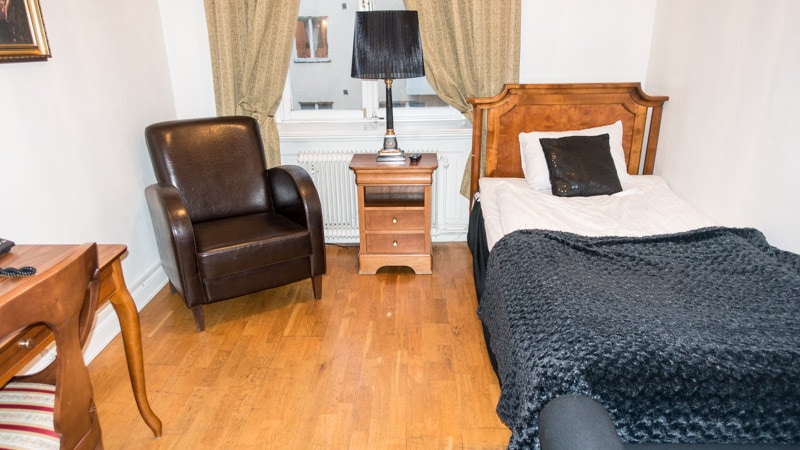
After a 45 minute walk, I finally made it to Hotel Hansson. The walk might have been a little longer than I would have liked, but I did get to see different parts of Stockholm.
Hotel Hansson is a 4 star hotel located in the Vasastan district about 500 meters from Odenplan Station. This wonderful part of the city was surrounded by many restaurants, cafes, shops, and bars were located only minutes away.
The front of the hotel and the lobby of Hotel Hansson was beautiful. The rooms, on the other hand were clean but dated. The sizes of the rooms were medium to small depending on which room you actually get and how many people you are traveling. For me, my room was basic with a little bit of charm with older furniture, wooden floors, and luckily, a flat-screen television. I enjoyed the size of the bathroom, but depending on your preferences, you might find it too small .
What I did’t like, more hated, was that Hotel Hansson charged guests if they wanted to use WiFi inside their room. There was free WiFi in the lobby, but come on, this is 2015. WiFi in rooms should be free, especially for a 4 star establishment.
I loved the free breakfast that Hotel Hansson included. Meats, cheeses, eggs, pastries, cereal. The breakfast was great and saved me a lot of money in the long run.
I booked Hotel Hansson for $73 a night on Expedia, so for that price, I can’t complain much. I would stay again, but hopefully they give guests free WiFi in rooms in the future.
Last Updated on December 14, 2025
